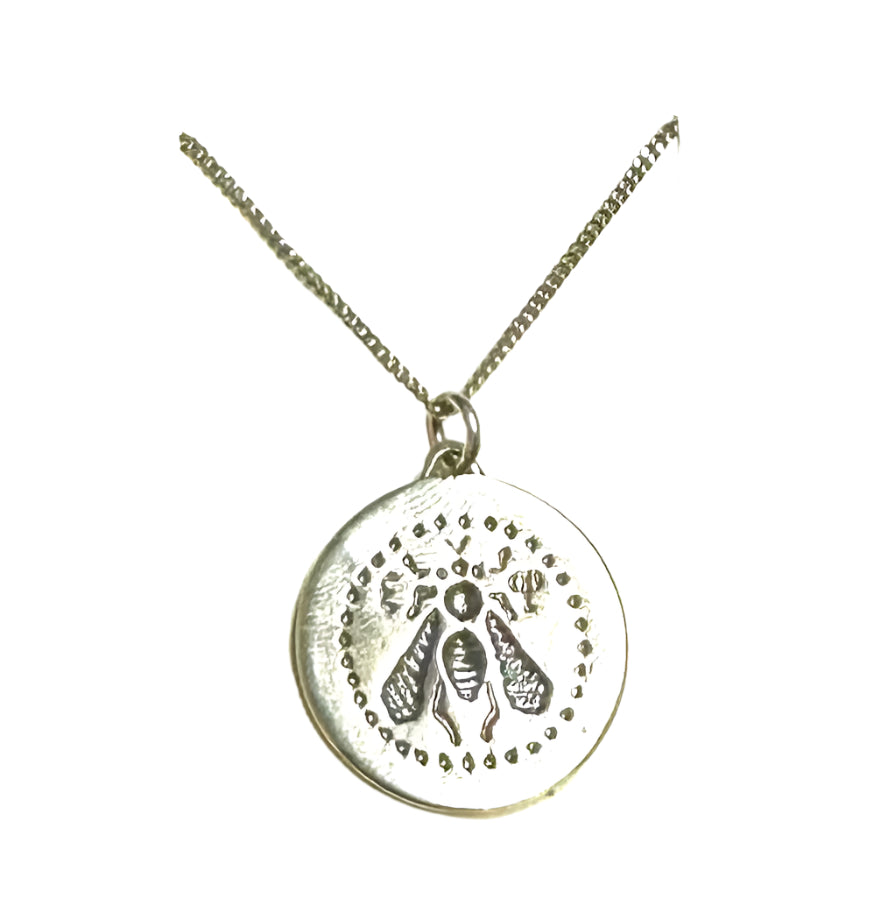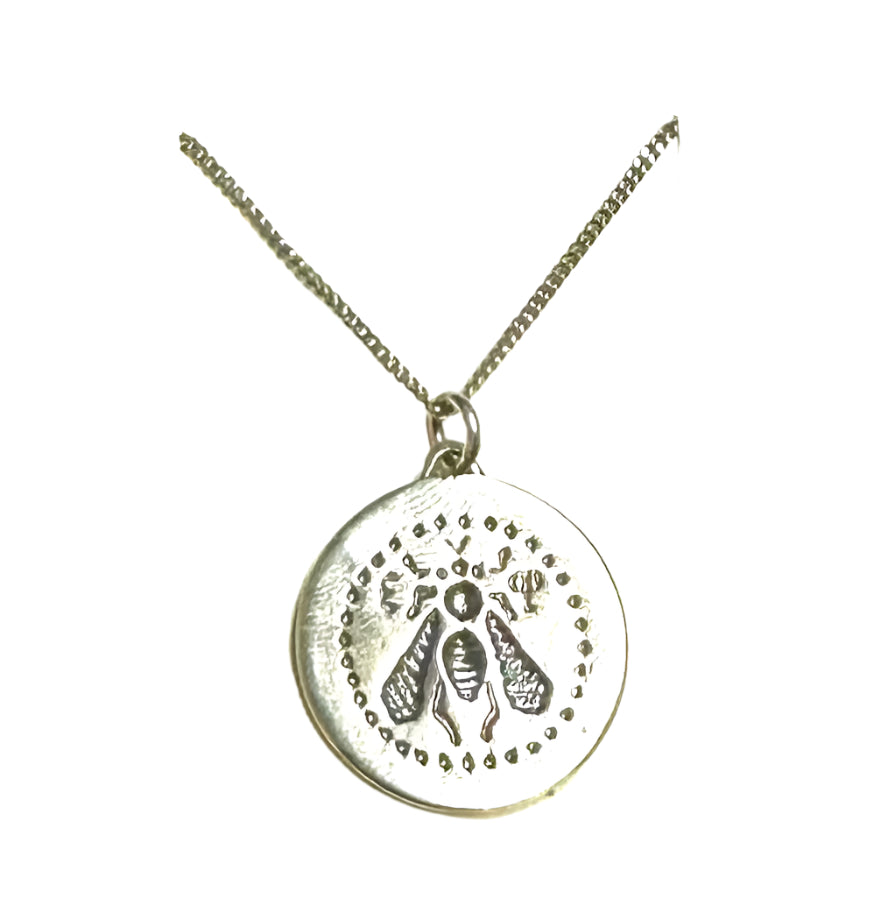
"The Queen Bee" Silver Seal Necklace
- Free returns
- Low stock - 1 item left
- In stock
Inspired by a famous ancient Greek coin depicting the queen Bee and 2 letters E Φ initials of the city(Silver Tetradrachm 350-340 BC Ephesus) Intaglio seal. The master model is hand engraved by Maria A. The seal is made by the traditional lost-wax technique.
Born and raised in Anthens, Greece, Maria Apostolopoulou revives and reinvents the ancient art of Glyptography, specializing in seal stone carving, gem sculpture, reverse intaglio, art medal, and coin engraving. Her limited edition glyptic jewels are exhibited in galleries, museums, and cultural foundations, while also designing jewelry for renown jewelry brands and museum stores. Maria studied the art of Glyptography next to the last European master of glyptic arts, Nick Kielty-Labrinides.
Glyptography is the art of gemstone carving, dating as far back as 15,000 BCE in the form of pictography on cave walls. Pictographs eventually evolved into the earliest known form of writing, cuneiform. Cylinder and Scarab Seals with writing engraved into the stone served as both talismans and tools to seal items. During Alexander the Great's time, Alexandria became known as the birthplace of the Cameo carving, where they remained popular through the decline of the Roman empire and were revived during the Renaissance period.
Early in the 19th century, glyptic arts fell out of favor due to a flooding of the market with forgeries of ancient work. Cameos were still produced, but the emerging photographic arts forced the cameo art to the lowly status of fashion jewelry. The glyptic arts never completely vanished, but there hasn't been a significant market since the Victorian era, making this art form at risk of dying out.
18.25 inches long, pendant 1 inch diameter
This Item is Eligible for Shipping
